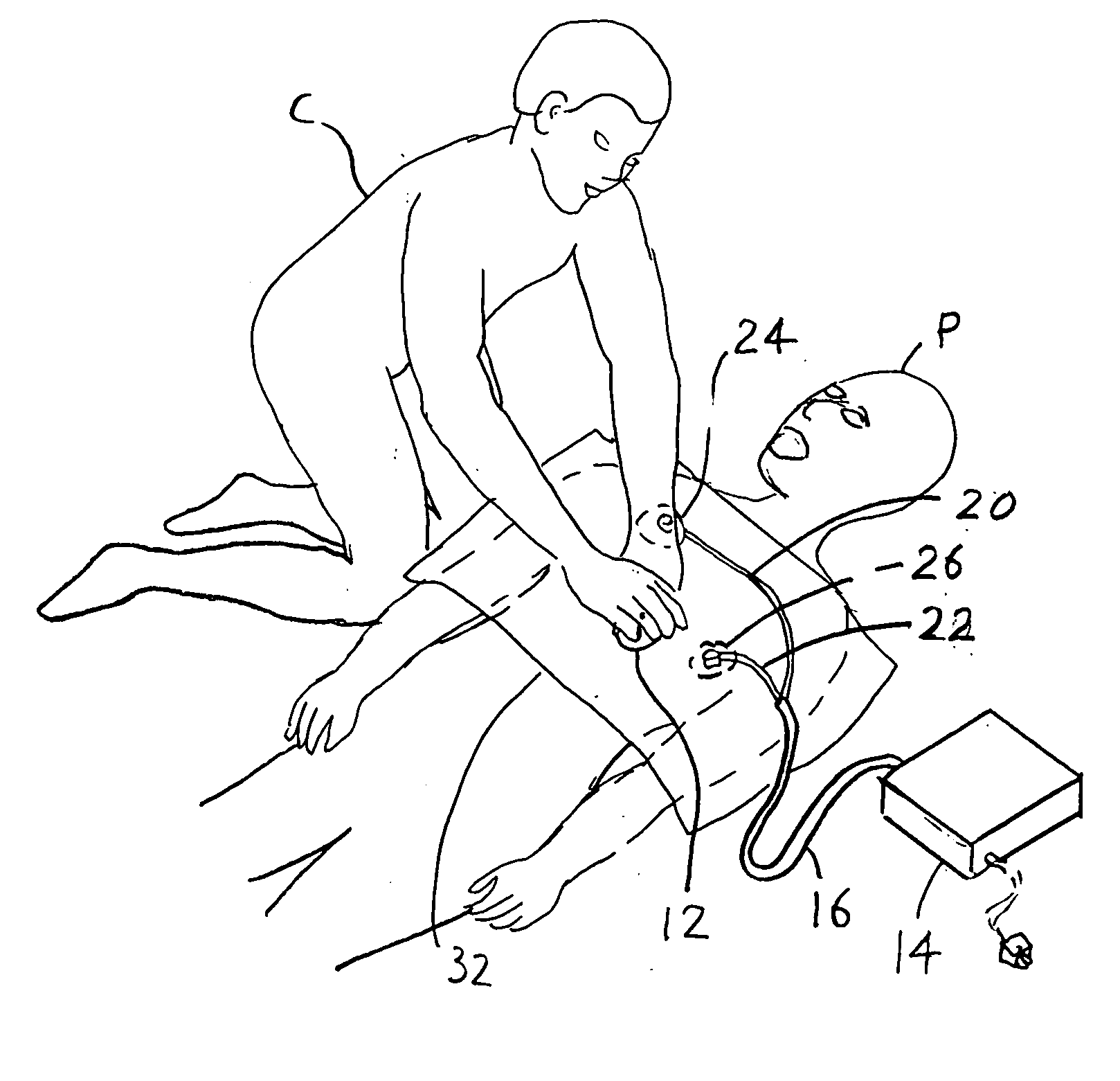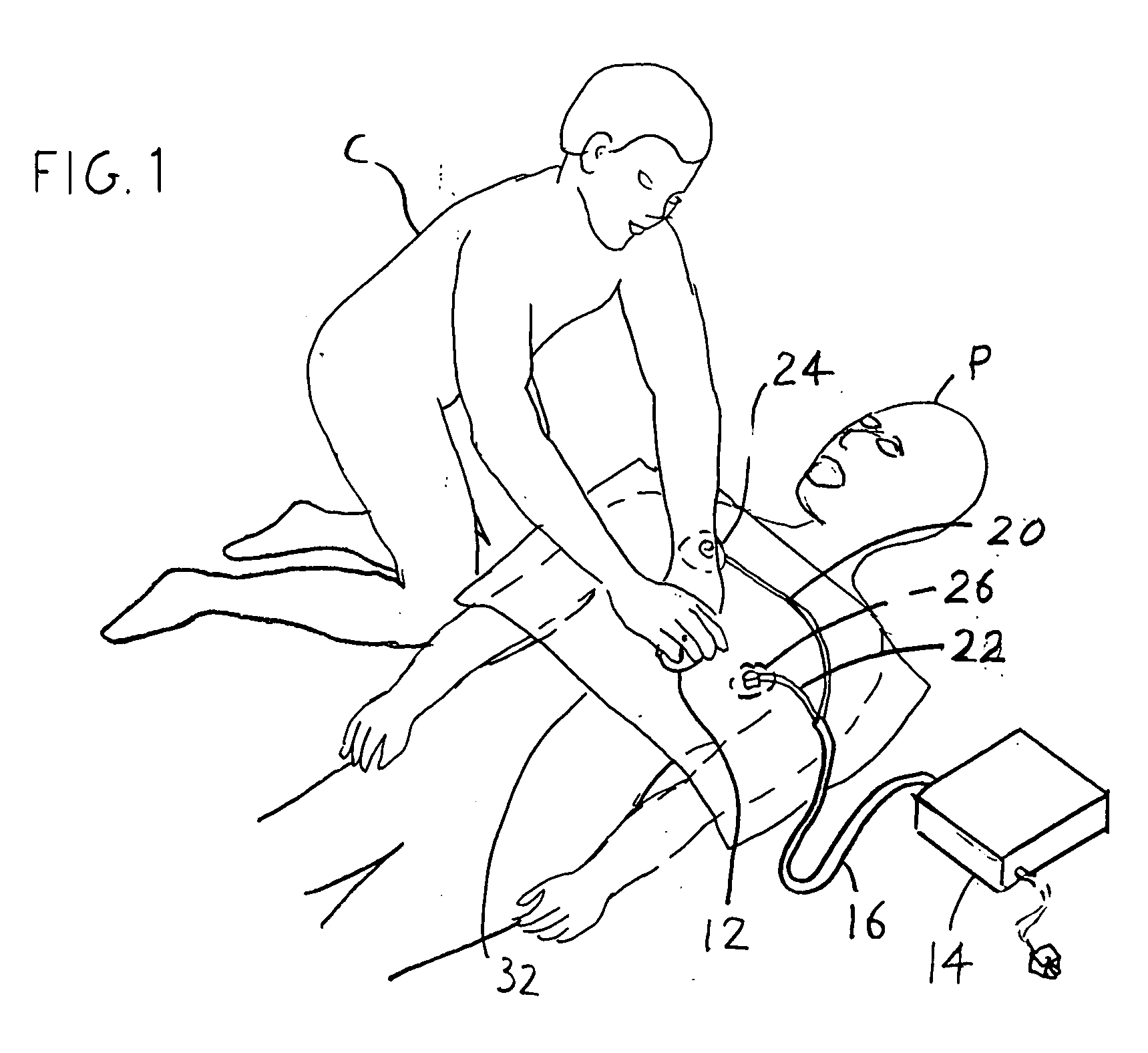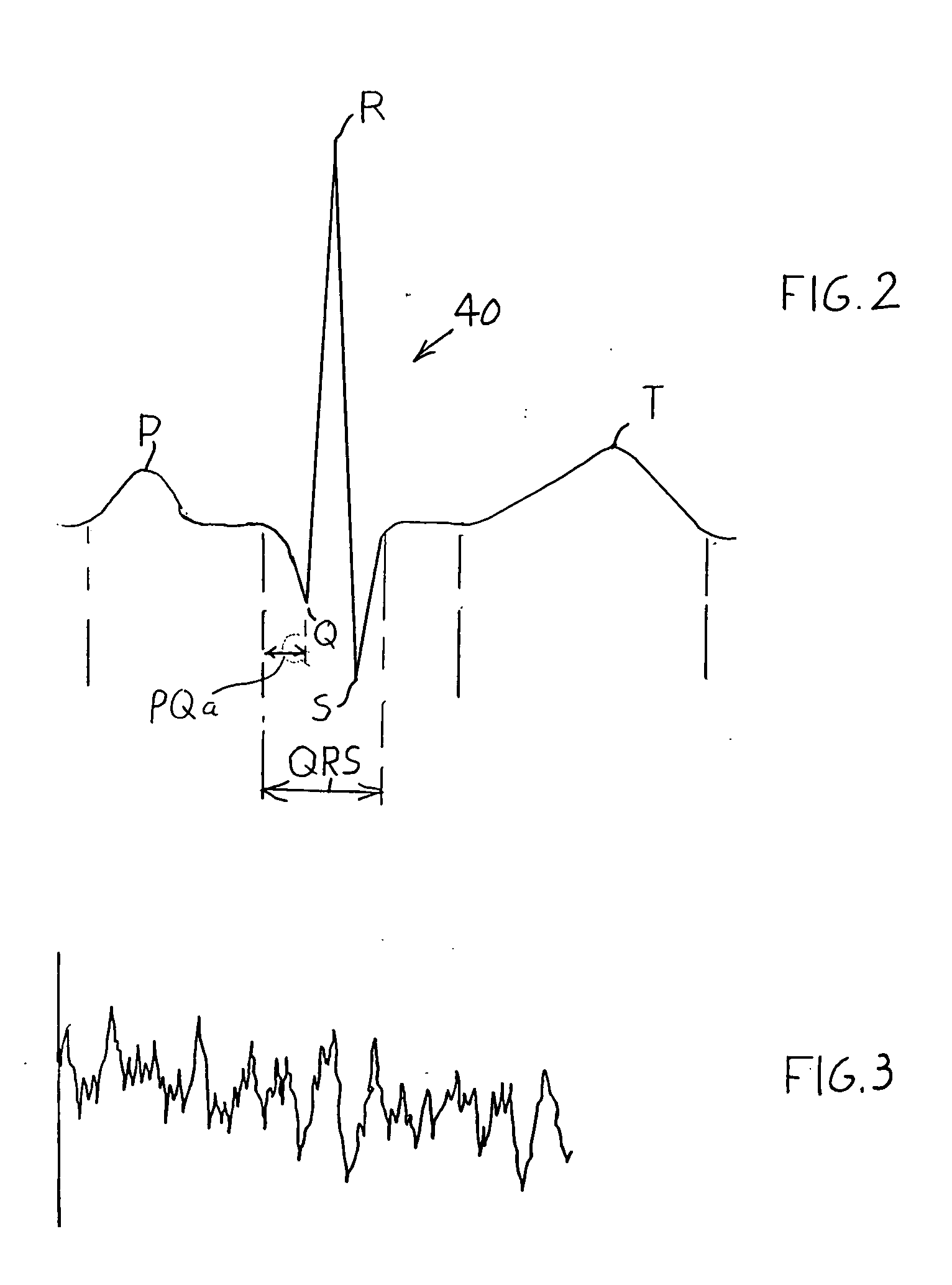Rhythm identification in ECG for resuscitation
a technology of resuscitation and ecg, which is applied in the field of ecg resuscitation and ecg identification for resuscitation, can solve the problems of harming patients, adversely affecting the survival possibility of victims, and harming patients, and achieves accurate evaluation of ecg signals
- Summary
- Abstract
- Description
- Claims
- Application Information
AI Technical Summary
Benefits of technology
Problems solved by technology
Method used
Image
Examples
Embodiment Construction
[0016]FIG. 1 illustrates a victim who has signs of cardiac arrest and who is being treated by a rescuer C. The rescuer may be a person who is a bystander and who has taken a CPR course. The rescuer has applied the electrodes of an AED (automatic external defibrillator) 14 that was available at the site of possible cardiac arrest, and is performing chest compressions at the lower chest area 12. The automatic defibrillator 14 can apply high-voltage (e.g. 2,800 volts) shocks when the intelligence built into the defibrillator confirms the presence of a rhythm that prompts delivery of an electrical shock. The defibrillator has a cable 16 with wires 20, 22 having conductors that are connected to first and second electrodes 24, 26. The electrodes are attached to the skin of the victim at conventional locations under the right collar bone and left lower chest. The rescuer applies downward forces or compressions to the sternum. It is noted that in some cases a rescuer also may blow air into ...
PUM
 Login to View More
Login to View More Abstract
Description
Claims
Application Information
 Login to View More
Login to View More - R&D
- Intellectual Property
- Life Sciences
- Materials
- Tech Scout
- Unparalleled Data Quality
- Higher Quality Content
- 60% Fewer Hallucinations
Browse by: Latest US Patents, China's latest patents, Technical Efficacy Thesaurus, Application Domain, Technology Topic, Popular Technical Reports.
© 2025 PatSnap. All rights reserved.Legal|Privacy policy|Modern Slavery Act Transparency Statement|Sitemap|About US| Contact US: help@patsnap.com



